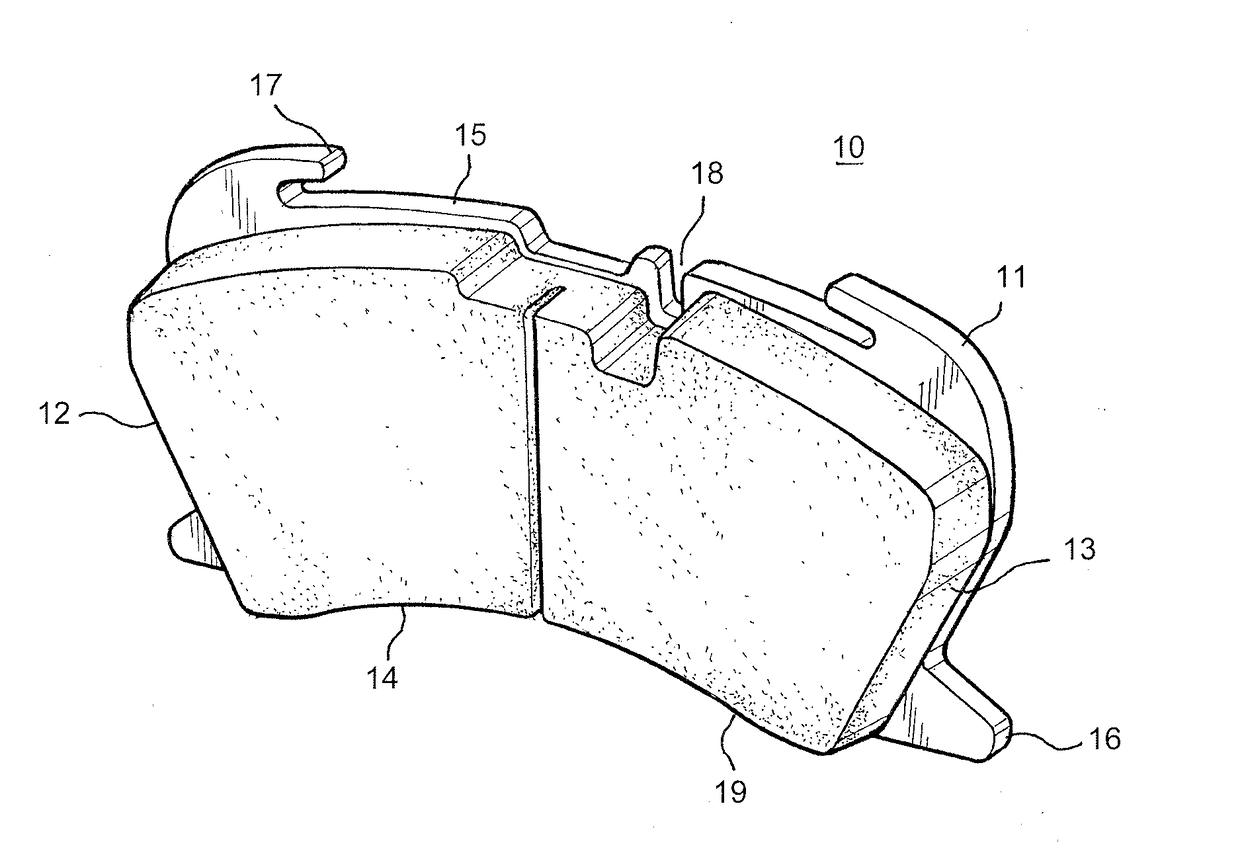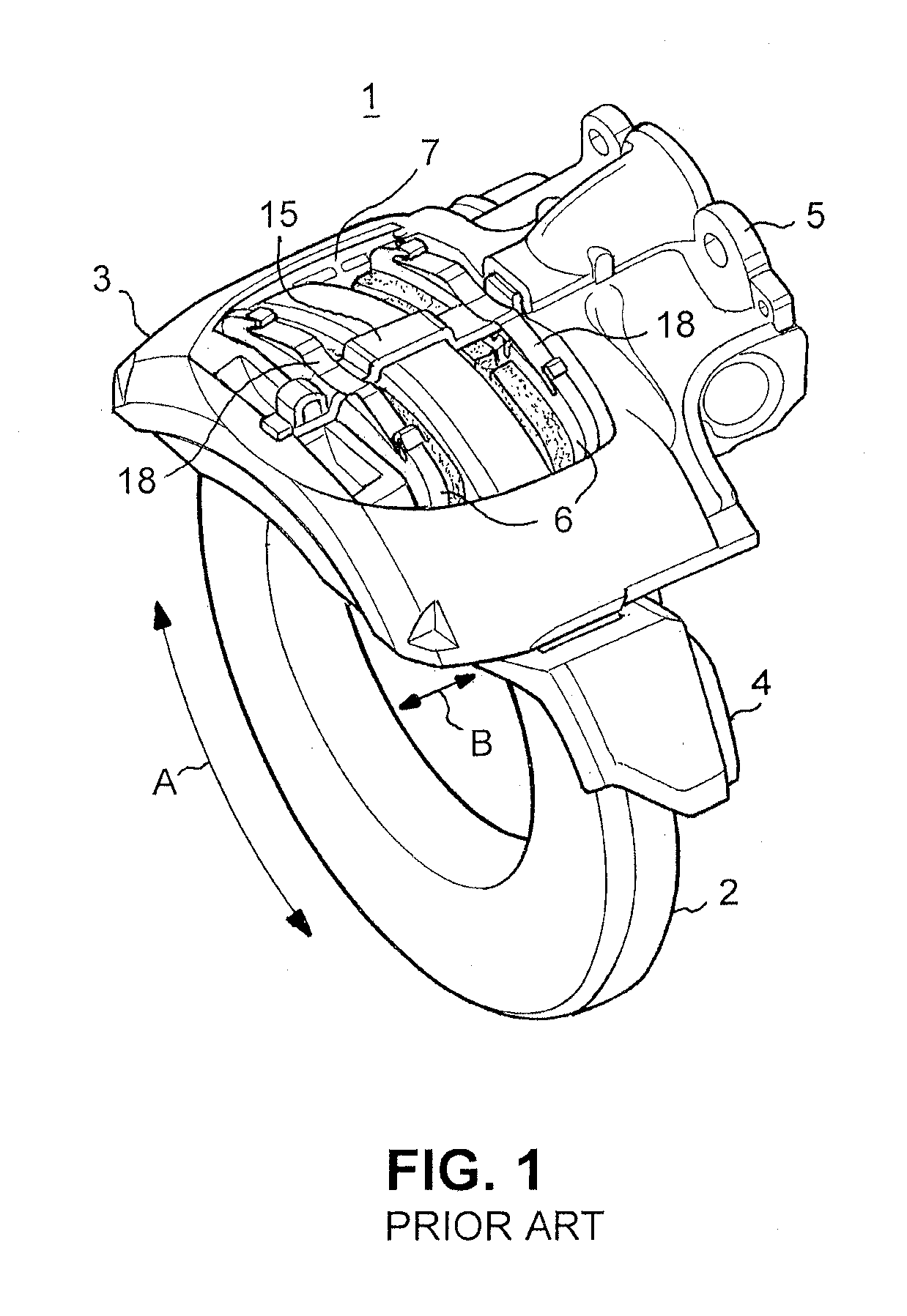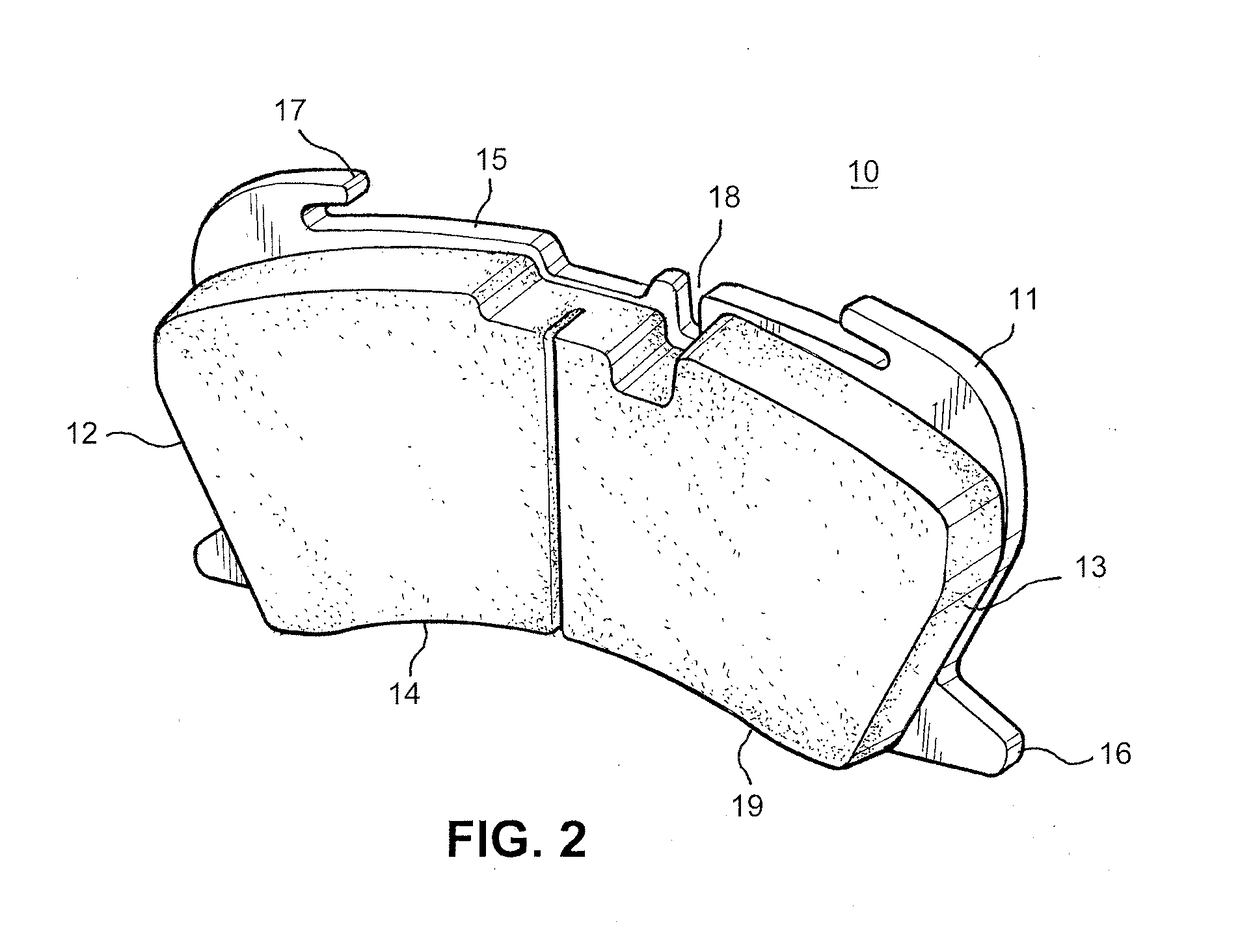Wear Optimized Pad Design
- Summary
- Abstract
- Description
- Claims
- Application Information
AI Technical Summary
Benefits of technology
Problems solved by technology
Method used
Image
Examples
Example
DETAILED DESCRIPTION OF THE DRAWINGS
[0018]FIG. 2 is an oblique view of an embodiment of the present invention in which a brake pad 10 includes a backing plate 11 with brake pad friction material 19 affixed thereon. The lateral sides 12, 13 of the brake pad 10 are generally aligned, as shown in FIG. 3, along radii extending from the rotation axis of the brake disc 2 (not illustrated). The radially inner side 14 and the radially outer side 15 of the brake pad 10 are slightly curved, generally following the curvature of the brake disc.
[0019]The brake pad backing plate in this embodiment includes lateral projections 16 which are formed to engage corresponding brake pad retention features in the carrier mount 4 in the manner disclosed in co-pending application Ser. No. 14 / 640,152, such that even in the absence of any additional brake pad retention devices, once engaged in the carrier mount's receiving features the brake pad is positively retained within the disc brake. The backing plate ...
PUM
 Login to View More
Login to View More Abstract
Description
Claims
Application Information
 Login to View More
Login to View More - R&D
- Intellectual Property
- Life Sciences
- Materials
- Tech Scout
- Unparalleled Data Quality
- Higher Quality Content
- 60% Fewer Hallucinations
Browse by: Latest US Patents, China's latest patents, Technical Efficacy Thesaurus, Application Domain, Technology Topic, Popular Technical Reports.
© 2025 PatSnap. All rights reserved.Legal|Privacy policy|Modern Slavery Act Transparency Statement|Sitemap|About US| Contact US: help@patsnap.com



